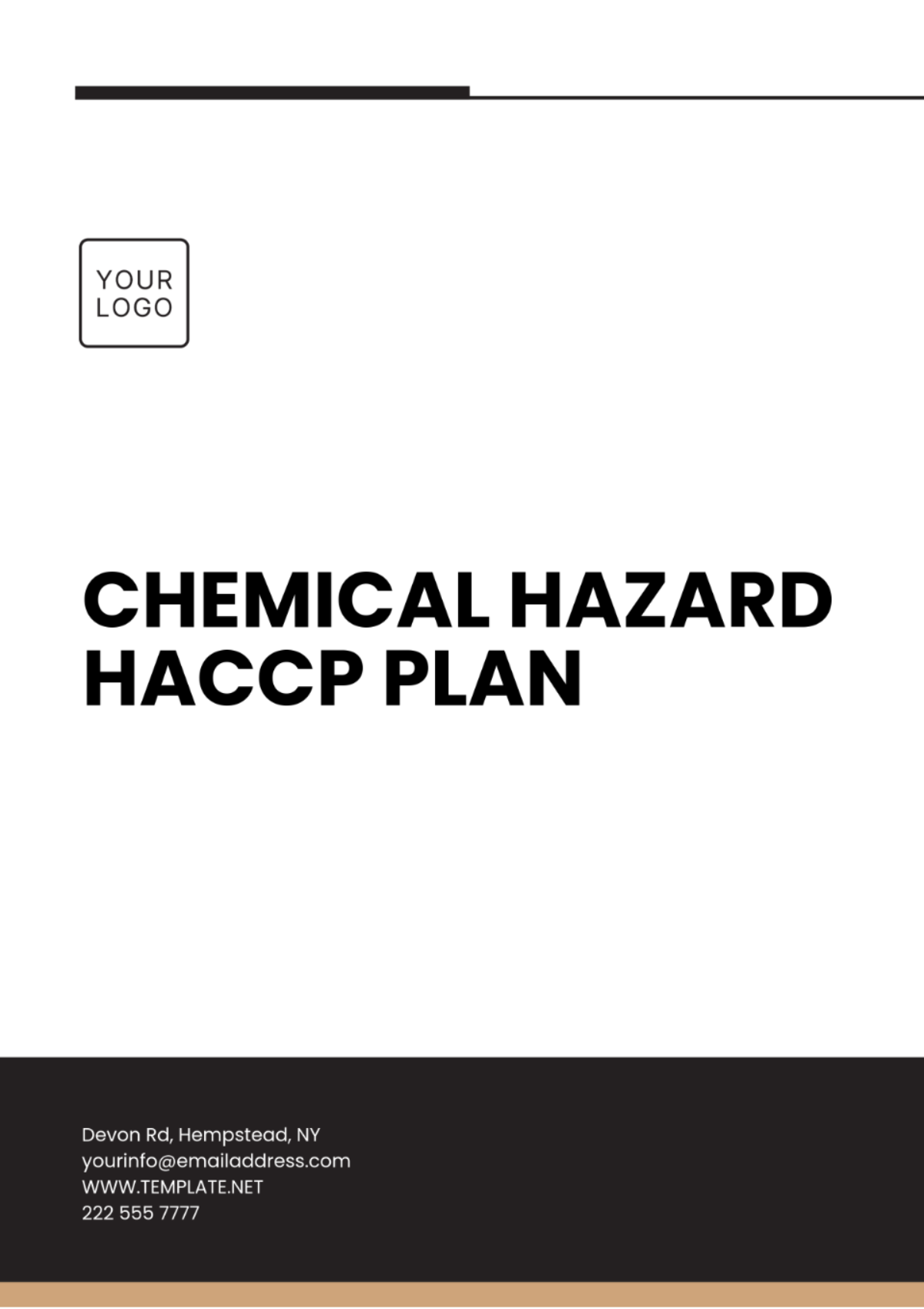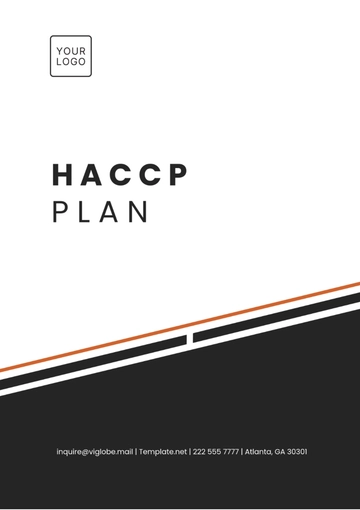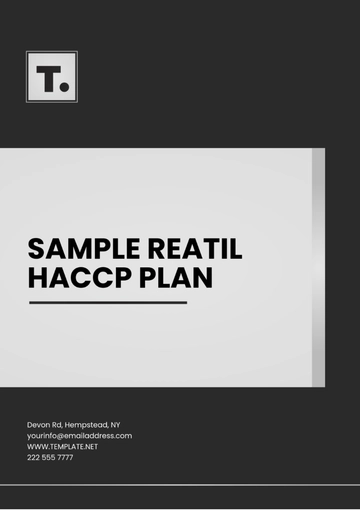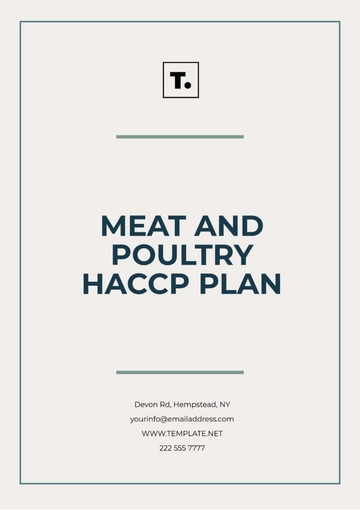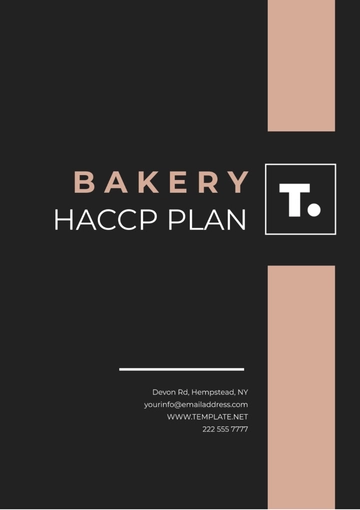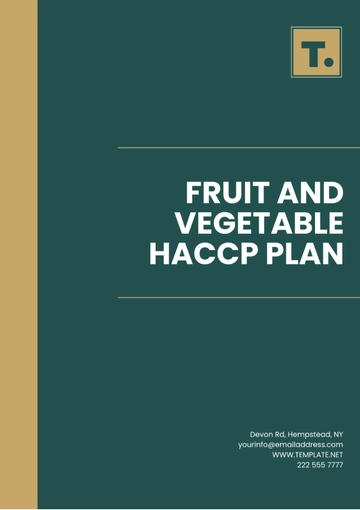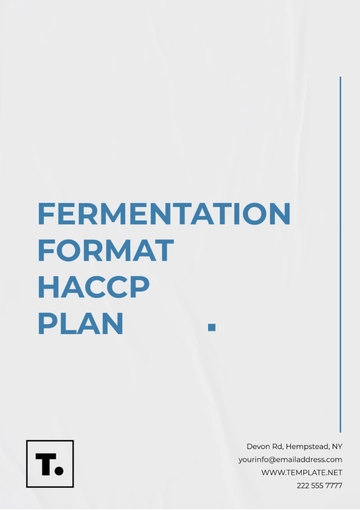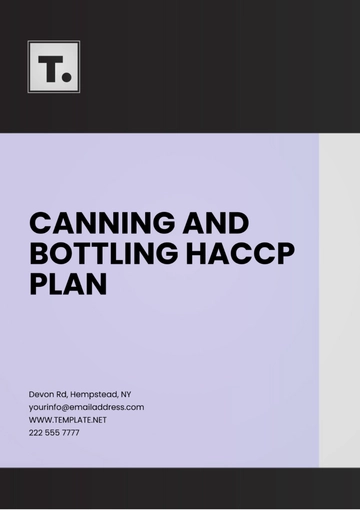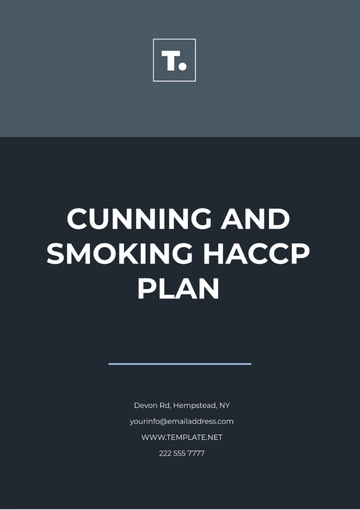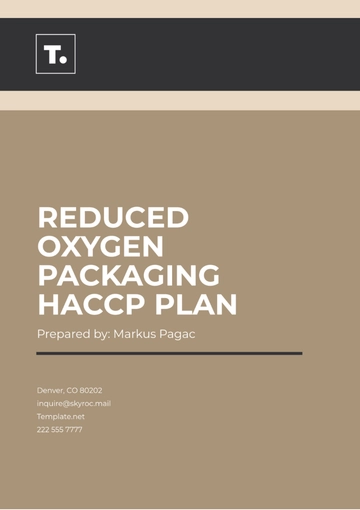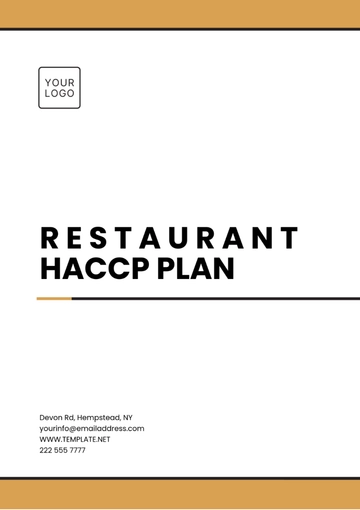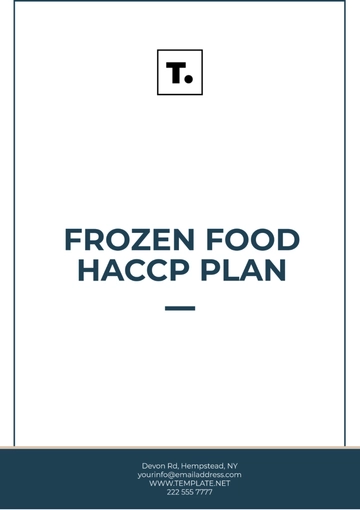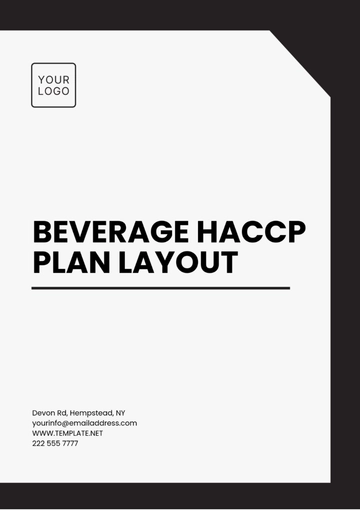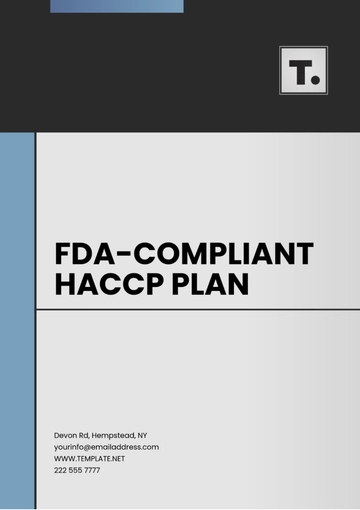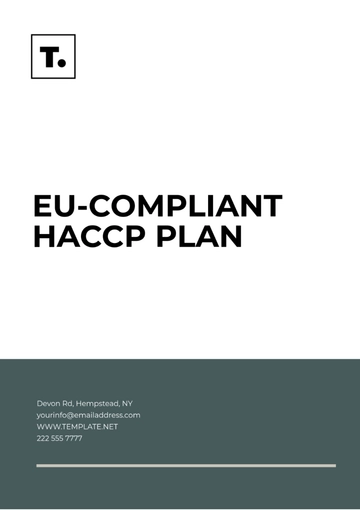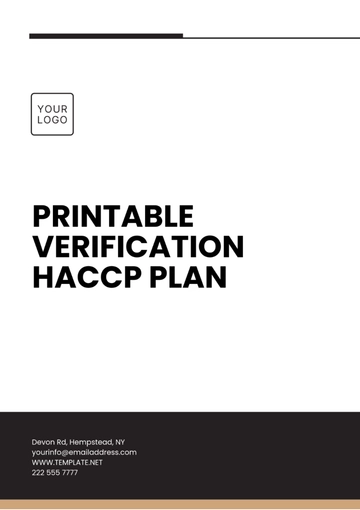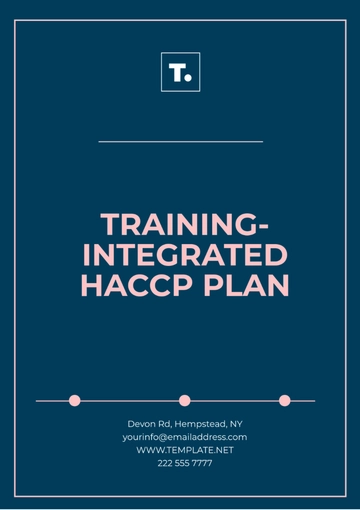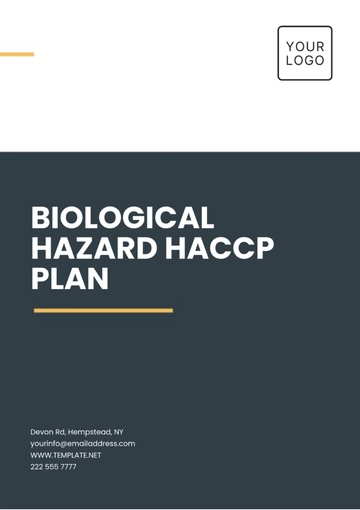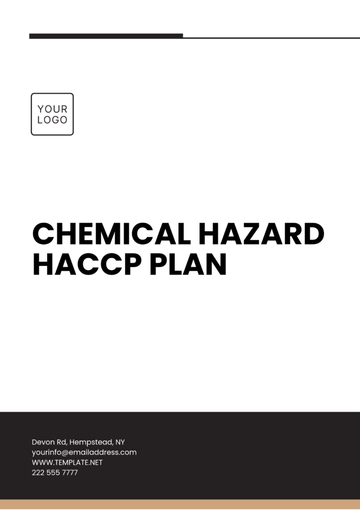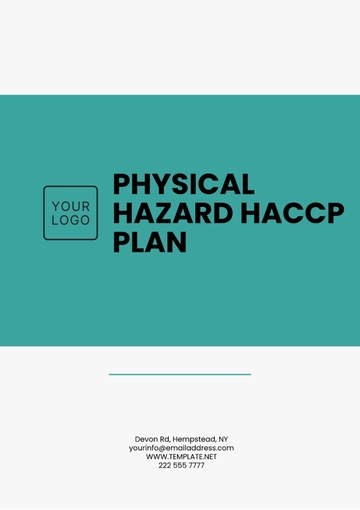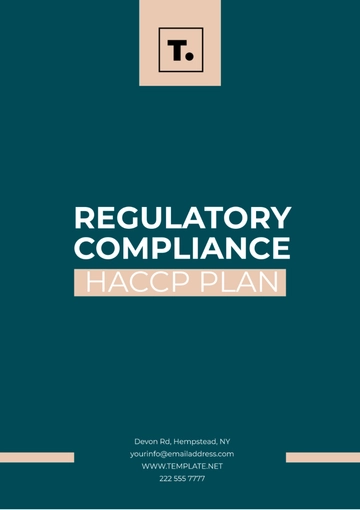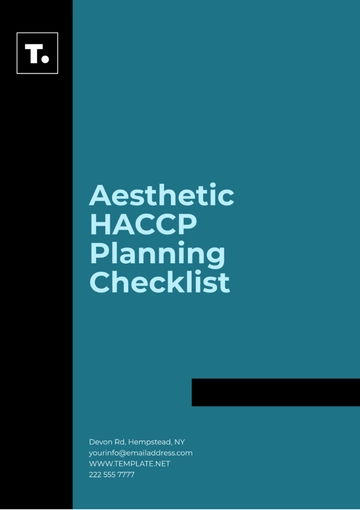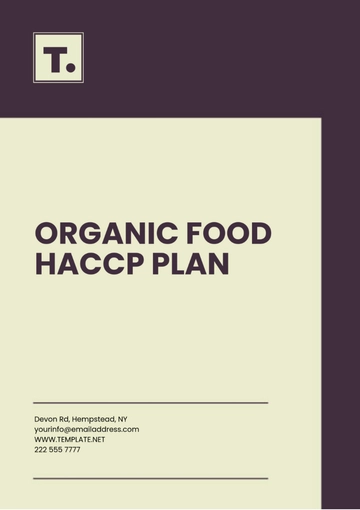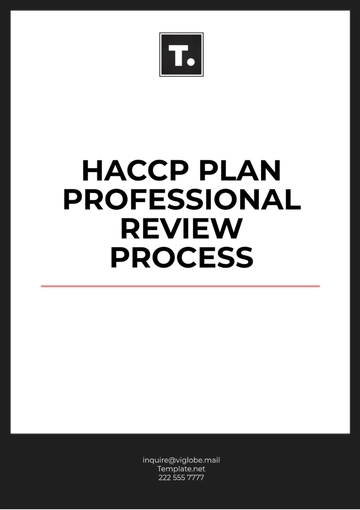Chemical Hazard HACCP Plan
Date: August 10, 2060
Prepared by: [YOUR NAME]
I. Introduction
This Chemical Hazard Hazard Analysis and Critical Control Point (HACCP) Plan is designed to manage chemical hazards throughout the production process to ensure the highest standards of food safety. The primary goal of this plan is to identify, analyze, and implement control measures to mitigate potential chemical risks, ensuring that food products meet safety requirements and protect consumer health. The plan aligns with global food safety regulations and industry best practices.
II. Hazard Analysis
A. Identification of Potential Chemical Hazards
B. Assessment of Risks
Each identified chemical hazard is evaluated based on the severity of potential harm and the likelihood of occurrence. Using a risk matrix, hazards are prioritized for control based on their risk score. This analysis allows for focusing resources on the most critical chemical hazards that pose a significant threat to consumer safety.
III. Critical Control Points (CCPs)
A. Identification of CCPs
The following stages of the production process have been identified as Critical Control Points (CCPs) where chemical hazards must be effectively controlled to ensure food safety:
Mixing and Processing: Control and monitoring of the use of food additives and allergens to prevent cross-contamination or misdosing.
Packaging: Ensuring that packaging materials are free from contamination and that packaging integrity is maintained to prevent chemical exposure.
IV. Monitoring Procedures
A. Methods for Monitoring
Monitoring at each CCP is essential to ensure that control measures are working effectively. The following methods are employed to regularly monitor CCPs:
CCP | Monitoring Method | Frequency |
|---|
Receiving | Visual inspection and residue testing | Every Batch |
Cleaning | Residue testing for chemical agents | Daily |
Mixing | Concentration checks for additives and allergen management | Every Mix |
Packaging | Integrity and contamination checks | Every Batch |
V. Corrective Actions
A. Steps for a Breached Critical Limit
If a critical limit is exceeded at any CCP, the following corrective actions will be implemented immediately:
Immediate Suspension of Production: Halt the affected production line to prevent further contamination.
Isolation of Affected Batches: Quarantine all batches produced during the breach for further testing and analysis.
Review of Procedures and Limits: Investigate the cause of the breach and reassess the control measures in place.
Retraining of Staff: Ensure that all personnel involved are retrained on the proper procedures and handling of chemicals to prevent future breaches.
VI. Verification Procedures
A. Ensuring Plan Effectiveness
Verification is critical to ensure that the HACCP plan remains effective and up to date. The following verification activities are conducted regularly:
VII. Documentation
A. Records Management
Comprehensive documentation is essential for tracking the effectiveness of the HACCP plan and maintaining compliance with food safety standards. The following records are meticulously maintained:
Plan Templates @ Template.net
